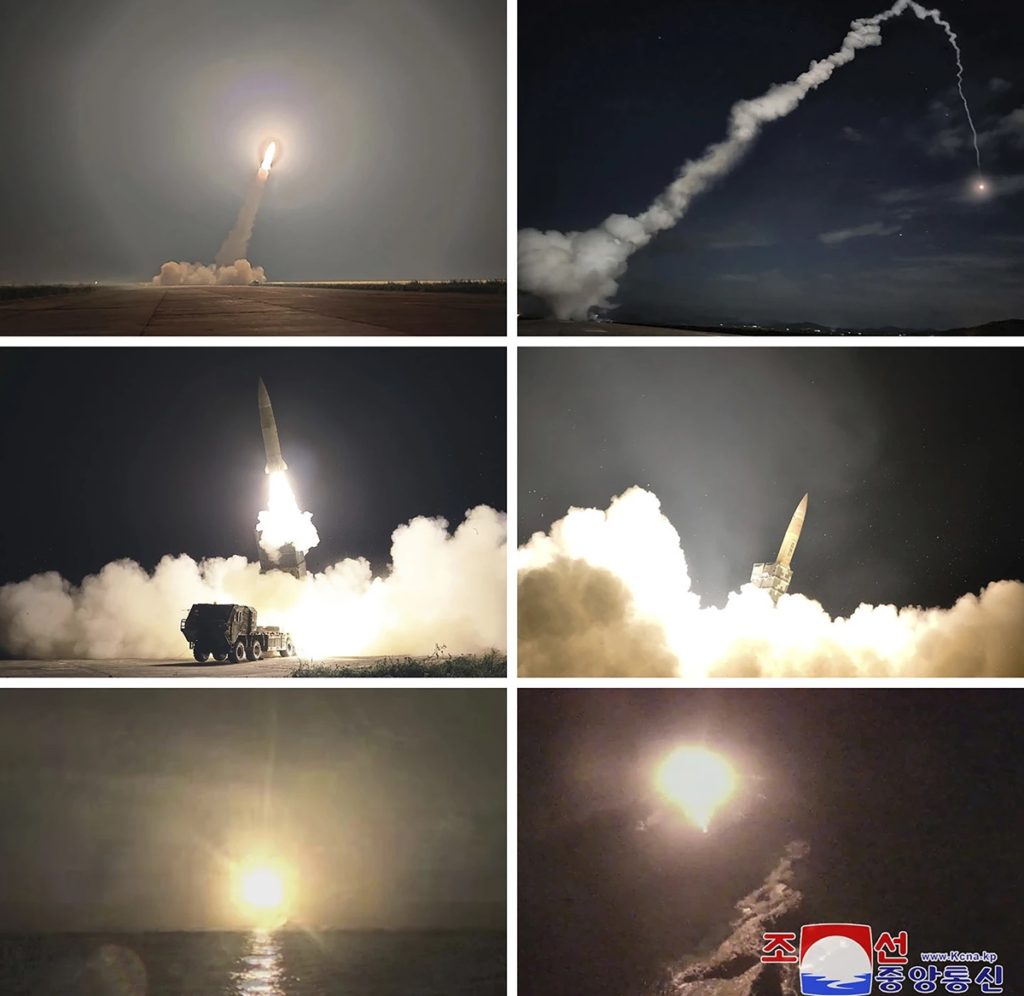In a tense escalation of tensions on the Korean Peninsula, North Korea has fired two short-range ballistic missiles during a military drill simulating a “nuclear strike” on targets within South Korea.
The provocative move by North Korea came in response to the ongoing joint military exercises conducted by the United States and South Korea. State media outlets reported on these developments, raising concerns about the stability of the region.
The General Staff of the North Korean People’s Army (KPA) claimed that Pyongyang had successfully executed its “nuclear strike mission” during this drill, according to a statement carried by the news agency KCNA.
“The KPA staged a tactical nuclear strike drill simulating scorched-earth strikes at major command centers and operational airfields of the ‘ROK’ military gangsters on Wednesday night,” it said, using the acronym for South Korea’s official name, the Republic of Korea.

Concerned South Korea condemns missile launches
South Korea’s Joint Chiefs of Staff (JCS) expressed deep concern over North Korea’s actions, reporting that the missiles were launched from a site near Pyongyang and traveled approximately 360 kilometers before landing off the eastern coast of the Korean Peninsula.
They labeled these missile launches as “a grave provocation” that threatens international peace and violates United Nations Security Council resolutions prohibiting ballistic missile launches by North Korea. South Korean and US intelligence authorities are currently analyzing the details of the launch.
Japanese Prime Minister Fumio Kishida also condemned North Korea’s actions.
“These conducts pose threats to peace and stability of not only our country, but of the region and international community, and cannot be tolerated,” Japanese Prime Minister Fumio Kishida told reporters.
Notably, these missile launches occurred during the night, which raised questions about the timing and motivations behind them.
Leif-Eric Easley, a professor at Ewha University in Seoul, suggested that launching missiles at night might be a precaution to avoid any misinterpretation as an attack on US or South Korean forces during field training. Alternatively, it could be a deliberate message from the Kim regime, showcasing its ability to strike at any time and from multiple directions, potentially complicating missile tracking and analysis.
US-ROK joint exercise concludes
North Korea’s drills were reported hours after the United States deployed strategic B1-B bombers as part of the Ulchi Freedom Shield 23 (UFS) exercises that take place each year.
North Korean leader Kim Jong Un called for the military to be constantly ready for combat as Pyongyang claimed the joint U.S.-South Korea (ROK) drills are a rehearsal for invasion.
This year’s UFS exercise focused on developing interoperability, military readiness, and ballistic counter-defense to combat the alarming rise in North Korean militaristic provocations. The U.S. and Republic of Korea (ROK) large-scale joint exercise concluded on August 31.
Some 1,600 soldiers and 450 tracked and wheeled vehicles, including artillery equipment such as K1A2 tanks and K9A1 self-propelled howitzers, participated in the training, the South Korean army said.
North Korea actively testing weapons
North Korea has been increasingly active in conducting weapons tests throughout the year, demonstrating its commitment to developing new weaponry and modernizing its military capabilities. Last week, North Korea attempted, unsuccessfully for the second time, to launch a military spy satellite into orbit, further heightening regional tensions

